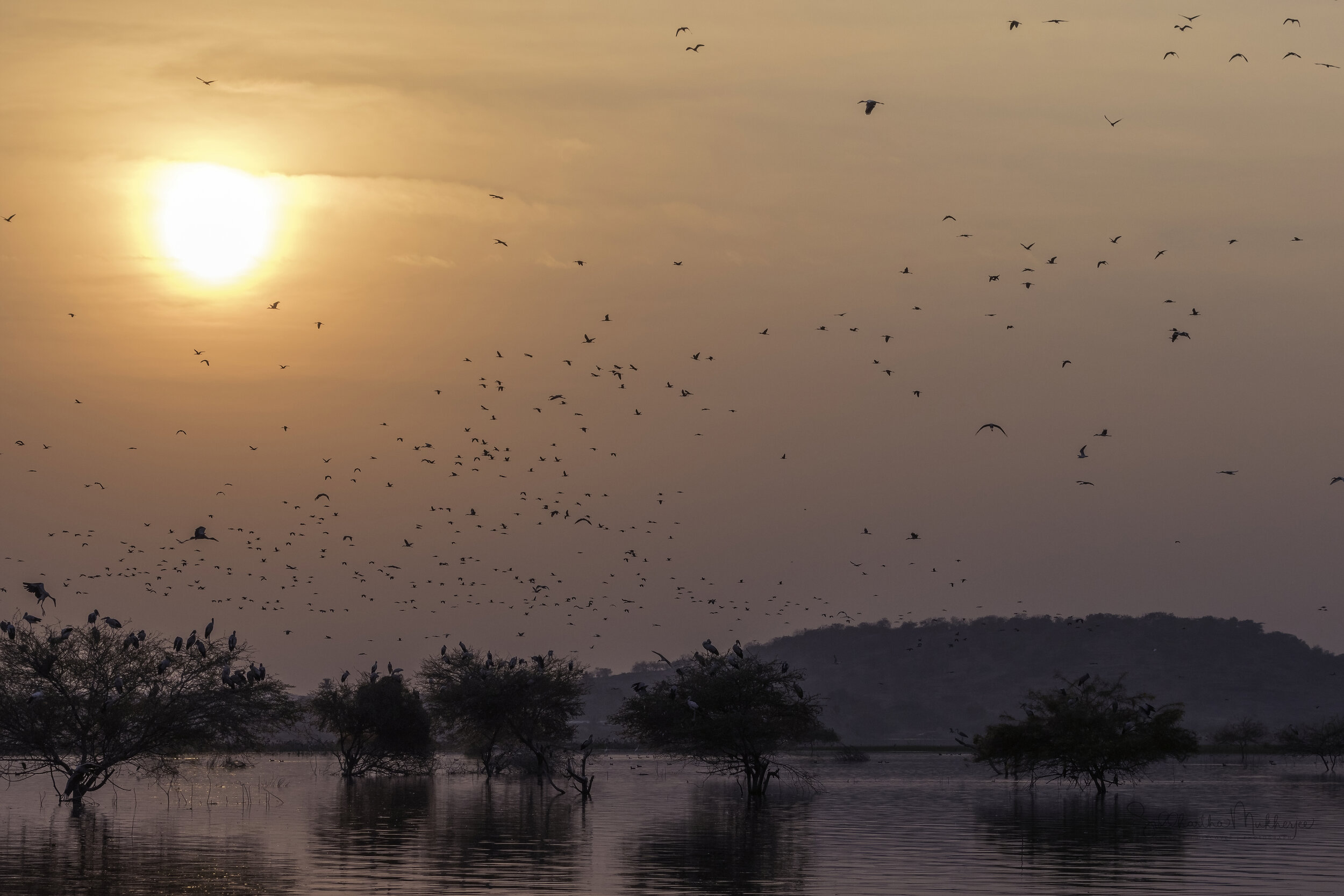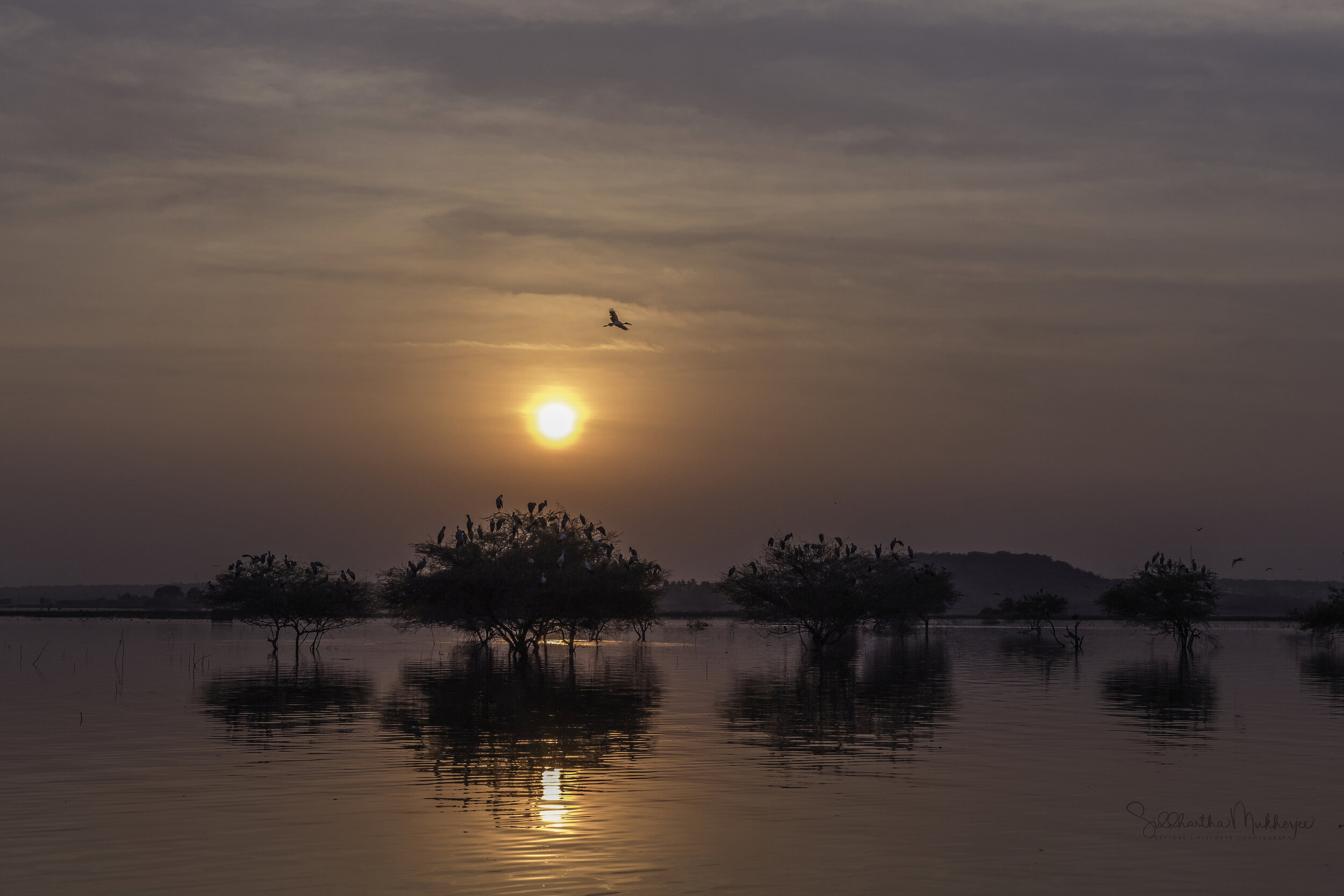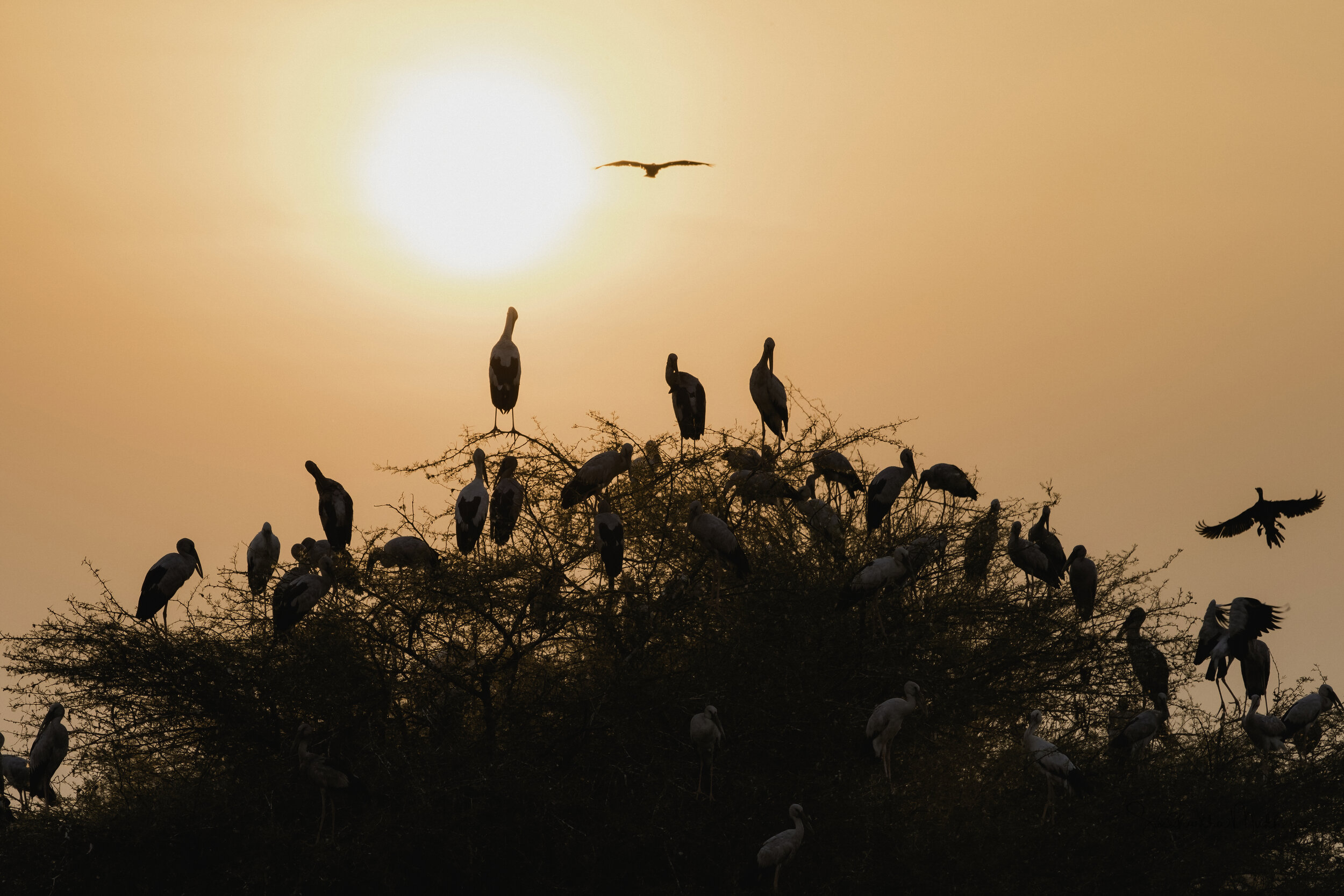Steppe Eagle
Aquila nipalensis
ENDANGERED
The eagles of Kumbhargaon
The first of a three eagle series.
Bhigwan Bird Sanctuary
Kumbhargaon is a nondescript village in the Satara district to the south of Bhigwan, a quaint, small and rugged town on the border of the Pune and Solapur districts in Maharashtra, in India. During its mild winters, Kumbhargaon, Bhigwan and its surrounding areas become the home of countless migratory birds making it the “Bharatpur of Maharashtra”. The area around Bhigwan and the River Bhima is vast and unique with diverse habitats ranging from the shallow wetland ecosystem of the Ujni backwaters to the surrounding rich farmlands and dry deciduous scrub forest with interspersed grasslands.
A short note on Bharatpur Bird Sanctuary, now known as Keoladeo National Park or Keoladeo Ghana National Park, in Bharatpur, Rajasthan, India is probably the most famous avifauna sanctuary in the country that hosts thousands of birds, especially during the winters. A World Heritage Site home to over 230 species, the sanctuary hosts scores of ornithologists who arrive during the hibernal season. The word ‘Ghana’ is the colloquial word for the sanctuary.
A mosaic of dry grasslands, woodlands, woodland swamps & wetlands these diverse habitats of Bharatpur are home to 366 bird species, 379 floral species, 50 species of fish, 13 species of snakes, 5 species of lizards, 7 amphibian species, 7 turtle species and a variety of other invertebrates. Every year thousands of migratory waterfowl visit the park for wintering and breeding. The sanctuary is one of the richest bird areas in the world and is known for nesting of resident birds and visiting migratory birds including water birds. The rare Siberian cranes used to winter in this park but this central population is now extinct. According to founder of the World Wildlife Fund Peter Scott, Keoladeo National Park is one of the world’s best bird areas.
To the south of Bhigwan, bereft of any hills, lie the wide Ujni backwater wetlands, a shallow waste water reserve formed by the discharge of water from the Pune region dams like Panshet, Pawna, Khadakwasla, Varasgaon, Temghar, etc. This semi waste water has created an excellent wetland based ecosystem supporting a large variety of water birds, both endemic and migratory, and also helped with the local agriculture. Nearly 300 species of endemic and migratory birds have been recorded here. The rainfall in the Pune region decides the water level in Ujni dam. Lesser the water, the shallower it is and therefore more birds make it their home in the winter.





Surrounding this lush ecosystem are the rich grasslands and fertile farms home to an equally impressive list of birds, mammals and reptiles like the Indian courser, chestnut-bellied sandgrouse, blue-cheeked bee-eater, grey francolin, woolly-necked stork, and demoiselle cranes. The Indian chameleon is often seen here and after dark, creatures of the night like the leopard gecko and termite hill gecko are out and about. Although rare, the common sand boa, rat snake, and Russell’s viper are also spotted. The open areas around the villages host mammals like the black-naped hare, jungle cat, golden jackal, and Indian grey mongoose. The Asian palm civet can also be seen, especially at night. The extensive grasslands protect many mammals like the Chinkara, Hyena, Wolf and Indian fox. It is also popular for grassland birds and the birds of prey, including the Steppe Eagle and the rare Eastern Imperial Eagle. While largely unnoticed, frogs, toads, damselflies, dragonflies, beetles, and scorpions also inhabit the area. A study published by the Zoological Survey of India in 2002 reported 54 species of fish.
I spent a couple of days with some friends in Kumbhargaon village, the winter home for an immense variety of birds like Greater Flamingos, Gray Herons, Painted Storks, Brown Headed Gulls, River Terns & Little Terns, the Black-headed & Red-naped Ibis, Little Ringed Plover, Osprey and the Peregrine Falcon to name a few.
Apart from the grasslands, specifically for the migratory water birds, there are two areas where one can observe:
the Diksal area &
the Kumbharwadi area.
During my time here we were hosted by and had the expert help of Sandip Nagare and his team of knowledgeable guides from the Agnipankha Bird Watcher group, especially Ganesh Bhoi, who went out of their way to ensure we had fantastic opportunities to explore, discover, observe & photograph over 82 species of birds and wildlife including some rare ones. We stayed at Sandip’s homestay of the same name and had the added pleasure of indulging in delectable home cooked food.
With that as the prelude I have this blog as the first of a three part series on the eagles of Kumbhargaon starting with the Endangered Steppe Eagle.
‡‡‡‡‡
The Steppe Eagle
The steppe eagle (Aquila nipalensis) is a large bird of prey. Like all eagles, it belongs to the family Accipitridae. Their well-feathered legs illustrate it to be a member of the subfamily Aquilinae, also known as the "booted eagles". This species was once considered to be closely related to the non-migratory tawny eagle (Aquila rapax) and the two forms have previously been treated as conspecific.
A peculiar species of eagle. It is a specialised predator of ground squirrels on the breeding ground, also taking other rather small mammals and other prey, doing so more often when ground squirrels are less consistently found. In rather treeless areas of the steppe habitats, these eagles tend to nest on a slight rise, often on or near an outcrop, but may even the flat, wide-open ground, in a rather flat nest. They are the only eagle to nest primarily on the ground.
Steppe Eagle Range
The steppe eagle undertakes a massive migration from essentially its entire breeding range, moving en masse past major migration flyways, especially those of the Middle East, Red Sea and the Himalayas. They have been considered easily one of the most numerous migrating eagles in the world and in the Indian Subcontinent they have largely been regarded as "widespread and common" especially in winter. In winter, though less closely studied than during breeding, the steppe eagle is remarkable for its sluggish and almost passive feeding ecology, focusing on insect swarms, landfills, carrion and the semi-altricial young of assorted animals, lacking the bold and predatory demeanour of their cousin species. Although still seen by the thousands at migration sites in larger numbers than other migrating eagles of these areas, the steppe eagle's entire population has declined precipitously. Densities of steppe eagles vary greatly both regionally and annually and this species has specialised food requirements, making it more dependent on food availability than many other raptors. But this magnificent eagle is Endangered as their populations are thought to be declining considerably in excess of 50%.
The threats to this beautiful species consist of increasing steppe fires and pests around the nests (both probably increased by the warming climate) which can cause a large volume of nest failures. Rivaling these factors, declines are being exacerbated by disturbance and persecution via humans, as well trampling of nests by livestock. Free-flying steppe eagles are also being killed in alarmingly large numbers, especially in the stronghold nation for breeding of Kazakhstan, by electrocutions on dangerous electrical wires and pylons. Due to these and other reasons, the decline of the species is thought to be considerably in excess of 50%. Therefore, the species is considered to be Endangered by the IUCN.
The following are some photos of the steppe eagle recorded at the Kumbhargaon and Bhigwan grasslands.
In the two photos above and below, the well feathered legs are clearly visible illustrating it to be a member of the subfamily Aquilinae, also known as the "booted eagles"
After this long stretch of observing and approaching the eagle finally decided it was time to get to a different perch. The following are a few photos as the eagle took off and at 1200mm, with a wingspan between 5 and 8 feet on average (considered a medium size by eagle standards), I was too close to capture the entire bird in my frame. Click on the images to view in full size.
The following footage was recorded on 12th February across much of the grasslands surrounding the Kumbhargaon and Bhigwan area. Most of the eagles photographed above, of different ages exhibiting their respective plumages, can be seen here. It is truly an honour and privilege to be able to get close to and watch these magnificent birds of prey.
For more videos: Video Shorts
Related Posts



















